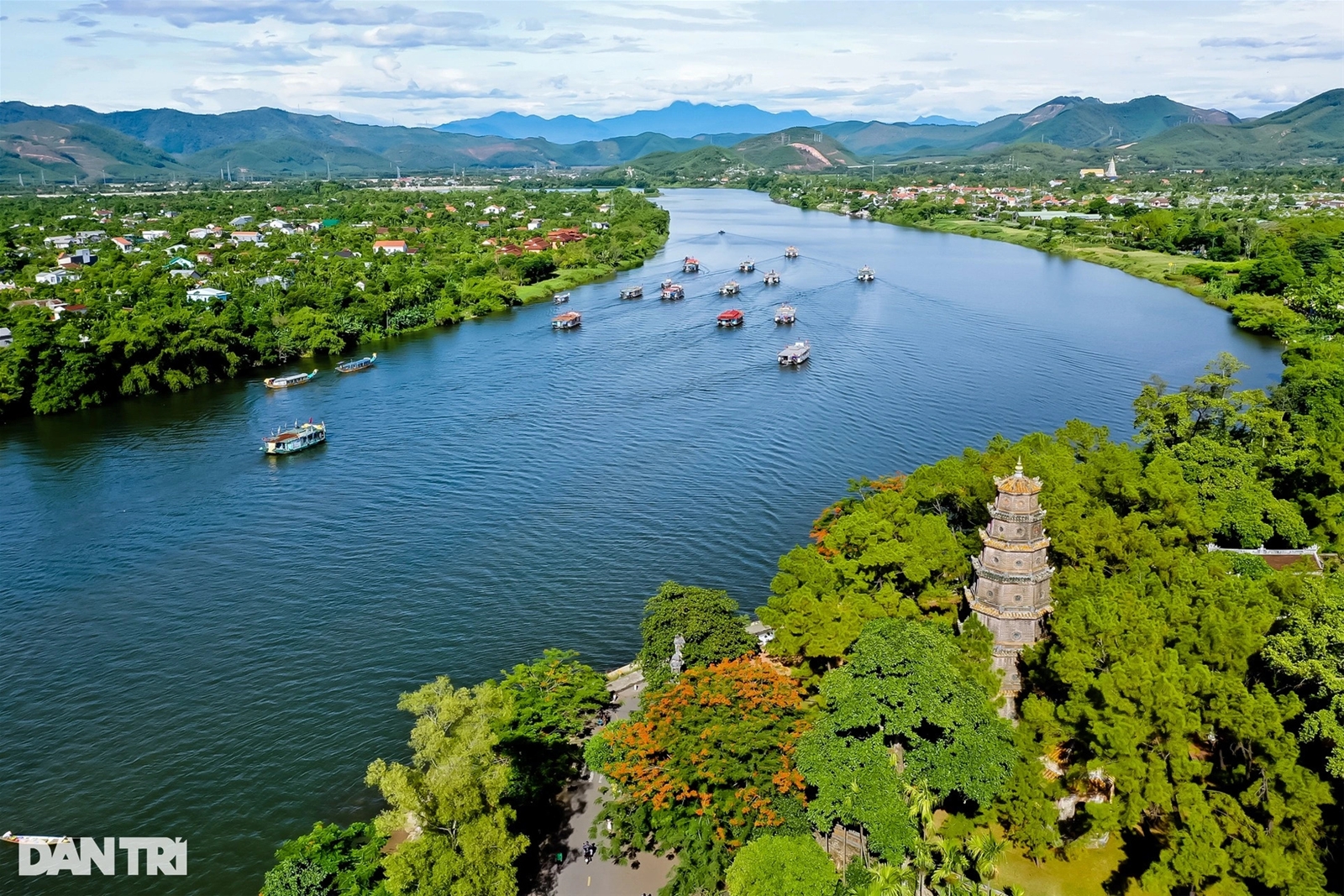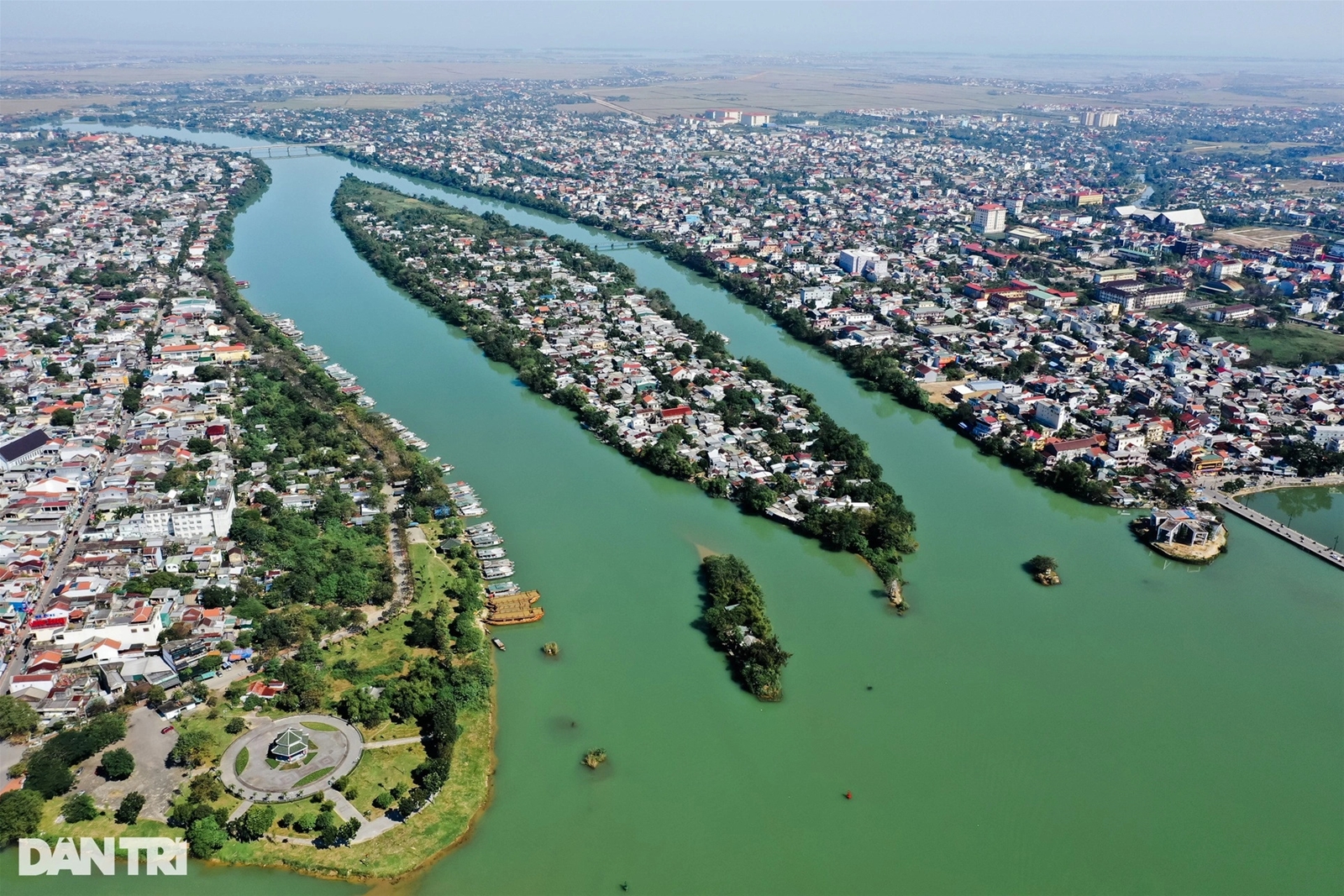[HIGHLIGHTS] Hue City under the Central Government, awakening the ”princess”
- Date Submitted: 28-10-2024
- Views: 166
On September 20, the 10th Central Conference (13th tenure) agreed to establish Hue City under the Central Government. This is a very wise strategy of the Central Government in restoring the worthy position of Hue City to play the central role of the Central region together with Da Nang. In addition, this also helps awaken many potentials of Hue that are currently like a ”sleeping princess in the forest”, untapped.
This new orientation is expected to stimulate not only the development of Hue City but also the Central region.
Firstly, Hue is a national and regional center of heritage, culture, education, and art, with a long-standing brand both domestically and internationally. This is a very special strength of Hue in the entire Central key region.
Secondly, Hue has many advantages to develop strongly economically in the coming time. Specifically, the land fund for development is very large with a lot of potential but has not been fully exploited, the counterweight to Da Nang is the increasingly limited land fund.
In addition, Hue has long been a prestigious human resource training center. Many talented people come to Hue to work, which means that the city owns a high-quality human resource. Accordingly, in the development of large-scale socio-economy in the coming time, the first need is human resources, Hue can completely meet this need.
Hue also has the advantage of being able to develop sustainable tourism, with many tourist areas to develop into a diverse tourism - service - experience chain from Bach Ma to Lang Co to Tam Giang Lagoon... Hue is also the only locality in the country with 8 heritages recognized by UNESCO as world heritages.
These are very unique and outstanding strengths compared to other cities in the Central region and the whole country.

Talking about the advantages and strengths of Hue, I think we should look at it more broadly in relation to Da Nang, because Da Nang is also the center of the region. When Hue is added as a centrally-governed city, this will be a positive point to further support the role of Da Nang, helping the Central region to have a worthy center.
I was fortunate to have the opportunity to work with architect Kathrin Moore to draft the Da Nang planning, which was then completed by the city and submitted by the Prime Minister in 2013. From that experience, the next time the planning was adjusted, I was invited by the city to join the Advisory Council for the Da Nang planning, implemented by the Surbana Jurong group, approved by the Prime Minister in 2021. Recently, I also participated in the Hue Planning Advisory Council, the Planning Appraisal Council for the Central Coast and North Central Regions.
From my experience, I see that the characteristics of the Central region are different from the two urban areas at the two ends of the country. The urban areas at the two ends of the country have a fairly large urban area, a large land fund, and can develop according to a centripetal model with satellite cities around. The model of these two regions has the center in Hanoi and Ho Chi Minh City, surrounded by provinces and cities. However, in the Central region, on the contrary, the terrain does not allow development according to this model.
The terrain of the Central region has a very narrow strip of land, developing in the North - South direction, with more than half being hills and mountains, leaving only a very modest area of flat coastal land for urban development.
Regional development here should have a different model, which is the center is no longer in the centripetal form but a center in the form of a line. In my opinion, with the central position in the form of a line Hue - Da Nang, Quang Tri - Hue - Chan May - Lang Co - Hoi An - Tam Ky - Chu Lai is a very attractive coastal urban chain. When developing along the route, the urban areas here need to be connected to each other through a strategic transport system including national highways, expressways, high-speed railways, waterways, etc. Multimodal infrastructure will bring great efficiency, the identity of the urban area is quite diverse.
In that direction, development in the Central region will be different from Hanoi and Ho Chi Minh City with very large ports, the largest in the whole region, from one point and spreading to other places. The Central region cannot do that, it is not encouraged to build the largest port, the largest center because it will not be able to bring logistic efficiency with such a narrow strip of land.
To develop the Central region, it is necessary to build a linear urban center: Instead of building a large port, it is a cluster of ports linking Chan May - Lien Chieu; instead of a large airport, it is a cluster of airports linking Phu Bai - Da Nang - Chu Lai and highways, railways connecting that chain of urban areas, especially between the two central urban areas of Hue City and Da Nang.
In particular, with the high-tech industrial cluster, the new economic center, Chan May - Lang Co now has a very large land fund, will be a very potential economic center of Hue, a place with high income, very strong development, expected to cooperate with Da Nang to complement each other's advantages and disadvantages.
Besides, we should not only make a really big national university in Da Nang or Hue, but should have two national universities in the Central region: Hue will be strong in training medicine, pedagogy, culture and arts, conservation; Da Nang will be stronger in training business administration, economics, infrastructure industry... with a credit transfer program between these two universities, suitable for training high-quality human resources. Students and lecturers can take advantage of local facilities to serve research and teaching.
For example, in Hue city, teaching about culture, art, conservation, there are UNESCO cultural heritages, very convenient. In Da Nang, there are industrial facilities that are convenient for training in technology, logistics, and industry.

Whether we like it or not, the center of the Central region will certainly have a certain connection between Da Nang and Hue. The market economy is very dynamic, when we open up connections and policies, investment capital will flow back and forth.
Hue has up to 8 UNESCO heritages, so the development of Hue City must protect these heritages. On the one hand, we must protect the 19th century heritage including the imperial city and Bao Vinh ancient citadel; the 20th century heritage area is the area on the southern bank of the Huong River; in parallel with the development of new urban areas with the identity of a new 21st century urban area in An Van Duong and beyond.
In my observation, Hue is on the right track: Urban development to the east of the current central area, prioritizing high-rise development here, coupled with limiting high-rise development in the historical center; Urban development towards Thuan An estuary helps open up the economy towards the sea; Urban development towards Phu Bai, can follow the airport urban model; And urban development towards Chan May - Lang Co can create a new leading economic center in the Central region, a tourist city connecting with Da Nang, Hoi An, a seaport cluster in Chan May, together with Lien Chieu to form a large port cluster in the region, combined with high-tech industrial development in Hue - Da Nang.
Simply put, the 19th and 20th century heritages of Hue are being preserved quite well, especially the urban areas on both sides of the Huong River, the mausoleums and the lives of local communities have special values. At the same time, new urban areas are also being developed to create a new identity. For example, in An Van Duong connecting to Phu Bai airport, Lang Co airport will have a metro line, a highway, high-rise buildings, a large highway, a public system covering the entire urban area, with bicycle and walking routes.
In addition, in the development of Hue city, sustainable development is not forgotten. For a long time, urban areas in Hue have been at risk of annual storms and floods. When building new urban areas, there must be solutions to effectively respond to climate change, rising sea levels and flood risks so that people can settle down and make a living.
In the context of Hue preparing to be approved as a centrally-governed city, I expect the city will not be in a waiting state. Because once recognized as a type I centrally-governed city, it will be accompanied by a series of new policy mechanisms with specific and preferential characteristics. So, right now, there needs to be a plan to implement the planning (Hue planning has just been approved) so that in the future, while considering conservation as the foundation, the future focus will be on developing the marine economy, urban economy, and sustainable socio-economy, so that Hue City under the central government will be a strong economic unit of the country!
Theo: Dân Trí






